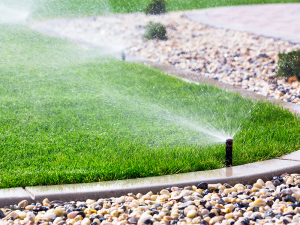DIY Sprinkler System Inspection
The summer heat can seriously take a toll on your lawn and landscape! To help ease the burden of watering their yard, more people are turning to home irrigation systems. Make sure your system is still delivering excellent results with these five user-friendly sprinkler system inspection steps.
Sprinkler System Inspection Checklist
Follow these easy steps for a thorough sprinkler system inspection.
1. Re-Evaluate the Controls
Before you begin inspecting the ins and outs of your home’s irrigation system, be sure the controls are set up adequately. Check to make sure the operating times and days are still in line for your yard’s needs. If you’ve recently expanded your landscape or cut back on yard space, consider adjusting the frequency to accommodate those changes.
2. Maintain Your Yard
Once you’ve decided on a schedule for your sprinklers, inspect your lawn for any potential barriers that could affect your system. Move any rocks, potted plants, or other belongings away from all sprinkler heads. A blocked sprinkler head can result in uneven water distribution and keep your lawn from looking great. During your walk around the yard, take note of where each sprinkler head is to help avoid potential damage or blockages.
3. Replace Damaged Equipment
After locating each sprinkler head, check to see if they’re still in good condition. Though commonly used, pop-up sprinkler heads are easily damaged, and a minor crack can seriously affect their performance. Along with the sprinkler heads, check any valves or connections for damage such as corrosion. A sprinkler system is complex, and any small defect can result in sub-par results.
4. Assess Rain Gauges, Sensors, and Backflow Preventers
Though every lawn gets watered naturally through rainfall, some regions experience more rain than others. If you live in a particularly rainy area, be sure to check your rain gauges, sensors, and backflow preventers are working properly. These components play an essential role in monitoring the soil’s natural moisture level and keeping your system from over-watering your lawn. If you’re unsure if your system is working as it should, grab your owners’ manual and run a simple test.
5. Power on Your System
Now that you’ve made sure each component of your system appears to be in good shape, power on your system for one last test. While the sprinklers are running, check for any major leaks, adequate coverage, and water pressure. Generally, the water pressure level should read between 40 – 65 PSI.
Does your home need a few more tune-ups for summer? The experts at Inspect-It 1st are ready to help get your home into tip-top shape! Locate an IIF office near you for a comprehensive home inspection.

